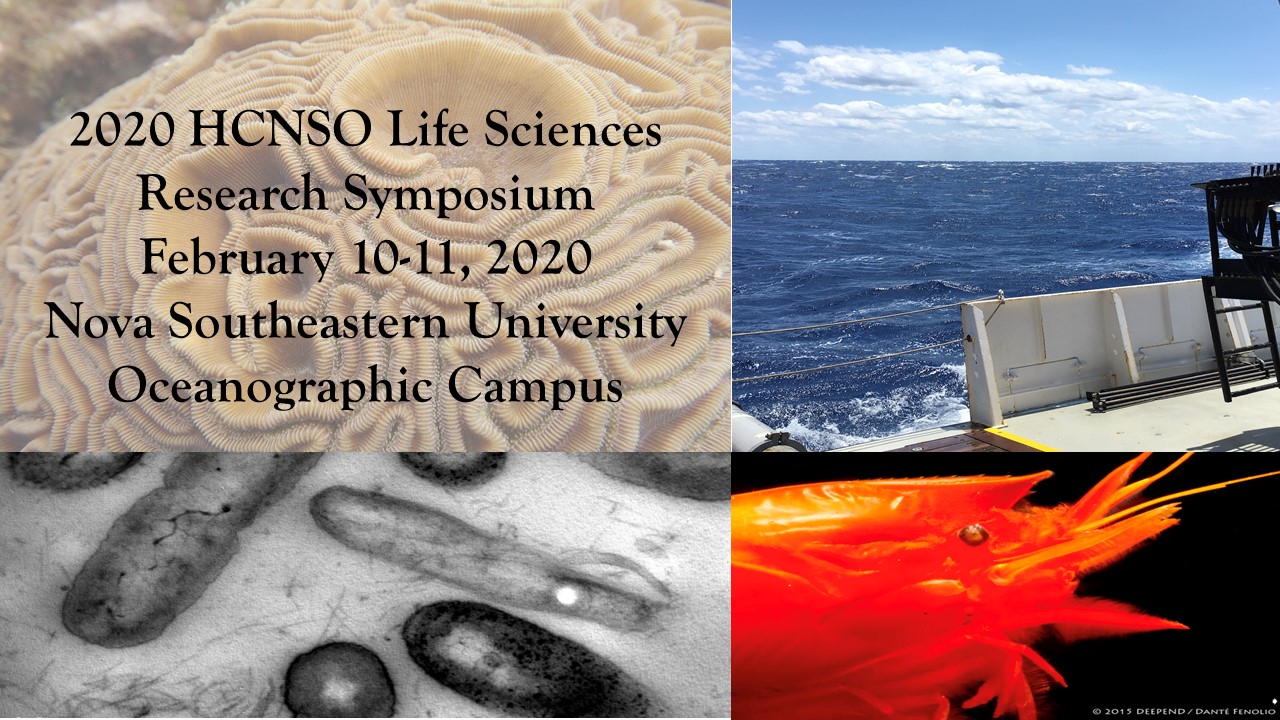Title
Necrotic tissue loss or programmed self-destruction? Investigating mechanisms of cell death in stony coral tissue loss disease
Location
HCNSO Guy Harvey Oceanographic Center Nova Southeastern University
Start
2-11-2020 10:00 AM
End
2-11-2020 10:15 AM
Type of Presentation
Oral Presentation
Abstract
A highly-lethal multi-species disease outbreak of stony coral tissue loss disease (SCTLD) has caused a dramatic loss of coral live tissue and coral density along the Florida Reef Tract. Similar to white plague and other coral ‘white syndromes,’ this disease is characterized by a rapidly progressing margin of tissue loss (>2cm/ day) with few other macroscopic symptoms, and often results in complete colony mortality in over 20 species of Caribbean coral. This study will investigate the histopathology of SCTLD tissue loss by using in situ apoptotic cell labeling via the TUNEL method and histology to investigate the relative roles of apoptosis and necrosis in actively diseased Pseudodiploria strigosa, Colpophylia natans, Orbicella faveolata, and Montastrea cavernosa collected in Spring 2017. Differentiating between these two modes of cell death will illuminate the possible involvement of the apoptotic immune pathway in SCTLD and provide critical information about the earliest stages of pathogenesis. Preliminary results have revealed the presence of highly abundant apototic nuclei in P. strigosa tissues near the disease margin, suggesting that programmed cell death may be the driving mechanism of a progressing SCTLD lesion. This research will refine our diagnostic resolution of SCTLD, inform future treatment strategies, and further our understanding of coral tissue-loss conditions.
Necrotic tissue loss or programmed self-destruction? Investigating mechanisms of cell death in stony coral tissue loss disease
HCNSO Guy Harvey Oceanographic Center Nova Southeastern University
A highly-lethal multi-species disease outbreak of stony coral tissue loss disease (SCTLD) has caused a dramatic loss of coral live tissue and coral density along the Florida Reef Tract. Similar to white plague and other coral ‘white syndromes,’ this disease is characterized by a rapidly progressing margin of tissue loss (>2cm/ day) with few other macroscopic symptoms, and often results in complete colony mortality in over 20 species of Caribbean coral. This study will investigate the histopathology of SCTLD tissue loss by using in situ apoptotic cell labeling via the TUNEL method and histology to investigate the relative roles of apoptosis and necrosis in actively diseased Pseudodiploria strigosa, Colpophylia natans, Orbicella faveolata, and Montastrea cavernosa collected in Spring 2017. Differentiating between these two modes of cell death will illuminate the possible involvement of the apoptotic immune pathway in SCTLD and provide critical information about the earliest stages of pathogenesis. Preliminary results have revealed the presence of highly abundant apototic nuclei in P. strigosa tissues near the disease margin, suggesting that programmed cell death may be the driving mechanism of a progressing SCTLD lesion. This research will refine our diagnostic resolution of SCTLD, inform future treatment strategies, and further our understanding of coral tissue-loss conditions.


